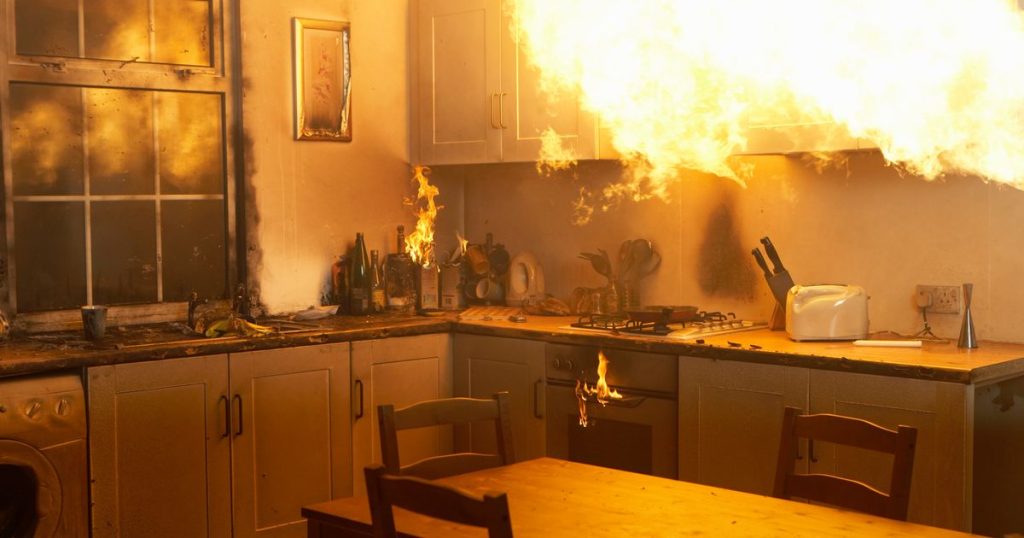Cooking is one of life’s greatest joys, but it also comes with risks, especially when oil is involved. I still remember the terrifying moment I stood in my apartment kitchen, staring at a grease fire that seemed to erupt out of nowhere. It’s a situation no one wants to face, and it’s a memory that still makes me nervous every time I use a skillet. But the truth is, grease fires are more common than you might think. According to data from the National Fire Protection Association (NFPA), cooking was the leading cause of reported home fires and injuries in the U.S. between 2017 and 2021, accounting for about 44% of all home fires. These statistics are a stark reminder that fire safety education is crucial for everyone, whether you’re a seasoned chef or a novice cook. Ahead, we’ll dive into the science of grease fires, the common scenarios in which they start, and the steps you can take to prevent and extinguish them.
One of the first things to understand about grease fires is the role of oil and its temperature. Every type of oil has a smoke point and a flash point, which are critical to understanding how and when a fire might start. The smoke point is the temperature at which oil begins to smoke and break down, while the flash point is when it can ignite into flames. Chef-instructor Shawn Matijevich explains that the flash point is usually about 50 degrees higher than the smoke point, meaning the transition from smoking to flaming happens quickly. For example, canola oil has a smoke point of 435 degrees Fahrenheit, while olive oil’s smoke point is lower, at 410 degrees. Knowing these temperature thresholds can help you avoid dangerous situations in the kitchen. Additionally, Jessica Randhawa, a food blogger who has experienced a grease fire firsthand, emphasizes the importance of watching for smoke, as it’s often the first warning sign before flames appear.
The most common cause of grease fires is simple: distraction. According to the American Red Cross, the leading reason for cooking-related home fires is not paying close attention to the stove. Whether you’re frying, boiling, or simmering, many cooking processes require constant supervision. If you step away from the stove or become distracted, the oil can quickly overheat and reach its flash point, leading to a fire that can spread rapidly. Chef Randy Feltis warns that flames can erupt just four to five minutes after you stop paying attention to a pan. Distractions like using your phone, being under the influence, or even frying food can increase the risk of a grease fire. Deep frying, in particular, is a high-risk activity because it involves submerging food in hot oil, which can easily overheat if not carefully monitored. To minimize this risk, Feltis recommends using a thermometer to keep track of the oil’s temperature and choosing a pan that is at least twice the volume of the oil to prevent hot grease from splashing onto an open flame or exposed heating element.
When it comes to preventing grease fires, awareness and preparation are key. In addition to monitoring temperature and avoiding distractions, chefs stress the importance of having the right tools on hand. For instance, a candy/jelly/deep fry thermometer can help you track the oil’s temperature accurately, and a metal lid or baking sheet can be used to smother a small fire if one starts. However, not all materials are safe to use in a grease fire. Water, for example, is a dangerous choice because it can cause the oil to splash and spread the flames further. Similarly, tossing flour, sugar, or baking powder onto a grease fire can exacerbate the situation. Instead, small grease fires can be safely extinguished with baking soda or salt, which starve the fire of oxygen. For larger fires, a Class B dry chemical fire extinguisher is the best option. Water-based extinguishers, on the other hand, should never be used, as they can make the fire worse. The key takeaway? Stay calm, act quickly, and always prioritize your safety.
Despite the best precautions, grease fires can still happen. If you find yourself facing one, it’s crucial to stay calm and follow the right steps. For small fires, smothering them with a metal lid, towel, or baking sheet is the safest approach. However, it’s important to keep the lid or other material in place even after the flames seem to die down, as the fire could reflash if exposed to oxygen while still hot. If the fire is too large to manage, don’t hesitate to evacuate the area and call 911. Remember, your safety is always more important than saving a meal. Chefs and fire safety experts agree that prevention and preparedness are the best tools for avoiding grease fires and staying safe in the kitchen. By understanding the risks, staying attentive, and having the right tools on hand, you can enjoy cooking with confidence and peace of mind.
In conclusion, while grease fires are a serious and potentially deadly hazard, they are also largely preventable. Education and awareness are the first lines of defense against these dangerous situations. Whether you’re a seasoned cook or just starting out, it’s important to respect the power of fire and take the necessary precautions to protect yourself and your home. With the right knowledge and tools, you can minimize the risk of a grease fire and ensure that your kitchen remains a safe and enjoyable space for cooking and sharing meals with loved ones.









